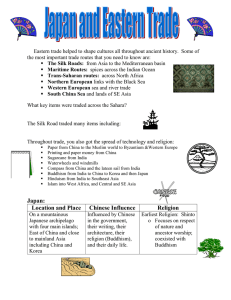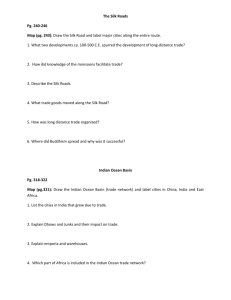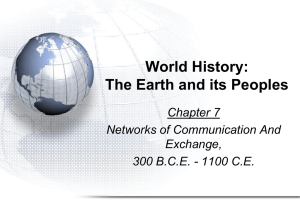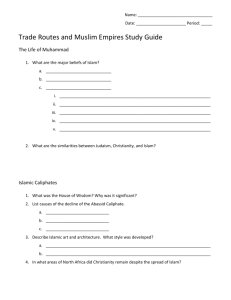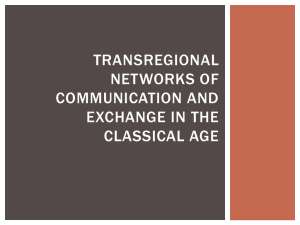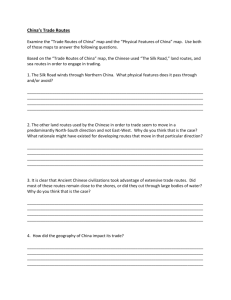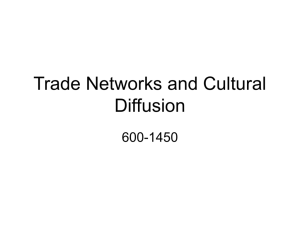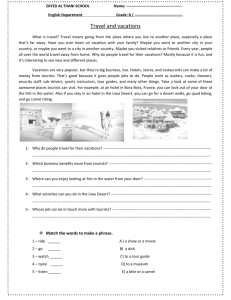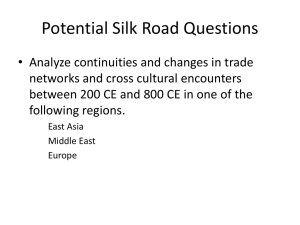Ch 8 Study Guide
advertisement
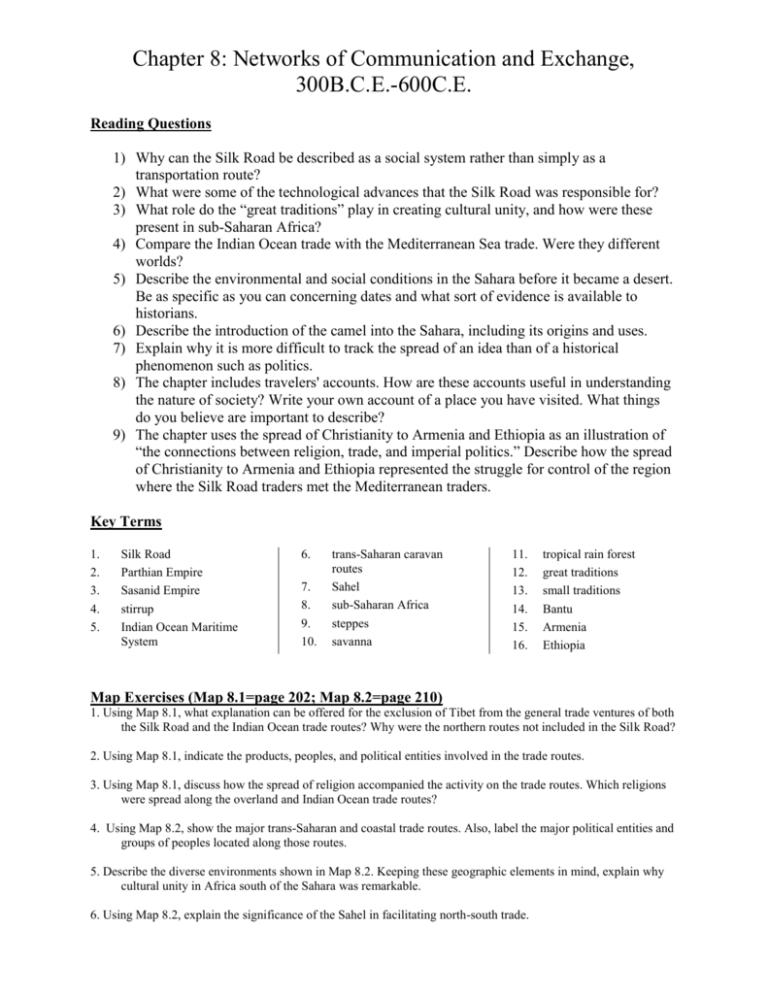
Chapter 8: Networks of Communication and Exchange, 300B.C.E.-600C.E. Reading Questions 1) Why can the Silk Road be described as a social system rather than simply as a transportation route? 2) What were some of the technological advances that the Silk Road was responsible for? 3) What role do the “great traditions” play in creating cultural unity, and how were these present in sub-Saharan Africa? 4) Compare the Indian Ocean trade with the Mediterranean Sea trade. Were they different worlds? 5) Describe the environmental and social conditions in the Sahara before it became a desert. Be as specific as you can concerning dates and what sort of evidence is available to historians. 6) Describe the introduction of the camel into the Sahara, including its origins and uses. 7) Explain why it is more difficult to track the spread of an idea than of a historical phenomenon such as politics. 8) The chapter includes travelers' accounts. How are these accounts useful in understanding the nature of society? Write your own account of a place you have visited. What things do you believe are important to describe? 9) The chapter uses the spread of Christianity to Armenia and Ethiopia as an illustration of “the connections between religion, trade, and imperial politics.” Describe how the spread of Christianity to Armenia and Ethiopia represented the struggle for control of the region where the Silk Road traders met the Mediterranean traders. Key Terms 1. 2. 3. 4. 5. Silk Road Parthian Empire Sasanid Empire stirrup Indian Ocean Maritime System 6. 7. 8. 9. 10. trans-Saharan caravan routes Sahel sub-Saharan Africa steppes savanna 11. 12. 13. 14. 15. 16. tropical rain forest great traditions small traditions Bantu Armenia Ethiopia Map Exercises (Map 8.1=page 202; Map 8.2=page 210) 1. Using Map 8.1, what explanation can be offered for the exclusion of Tibet from the general trade ventures of both the Silk Road and the Indian Ocean trade routes? Why were the northern routes not included in the Silk Road? 2. Using Map 8.1, indicate the products, peoples, and political entities involved in the trade routes. 3. Using Map 8.1, discuss how the spread of religion accompanied the activity on the trade routes. Which religions were spread along the overland and Indian Ocean trade routes? 4. Using Map 8.2, show the major trans-Saharan and coastal trade routes. Also, label the major political entities and groups of peoples located along those routes. 5. Describe the diverse environments shown in Map 8.2. Keeping these geographic elements in mind, explain why cultural unity in Africa south of the Sahara was remarkable. 6. Using Map 8.2, explain the significance of the Sahel in facilitating north-south trade.

